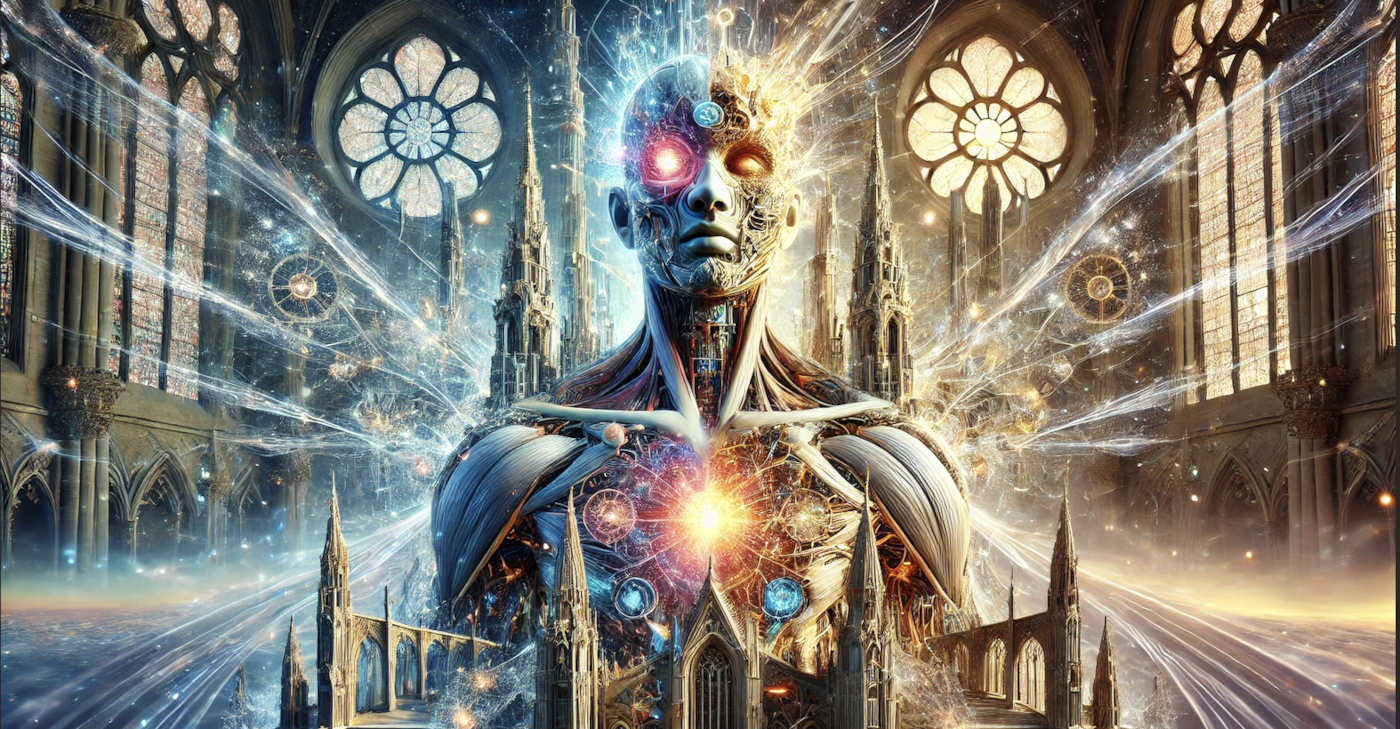
Architecture of the Soul
How Geography and Objects Shape Our Inner World:
To stand at the edge of a vast canyon, to lose oneself in the warren of a medieval city, or to awaken in a sterile, glass-walled skyscraper, each of these landscapes impresses itself upon us, altering the currents of our thoughts, the weight of our emotions and the trajectory of our desires. But is this shaping merely a momentary illusion, or does geography, architecture and the objects we surround ourselves with have a profound and lasting impact on our psyche? Can we reshape ourselves by simply stepping into a different world?
The philosopher Gaston Bachelard, in The Poetics of Space, suggested that architecture is not merely a backdrop but a vessel for memory, imagination and the psyche. A house is not just a structure, it is a map of our consciousness, layered with experiences, secrets and emotions. From the attic of childhood dreams to the basement of buried fears, our surroundings encode our inner landscapes. A small, cluttered apartment may enclose us reinforcing a sense of psychological congestion, while a high-ceilinged, light-filled space might encourage a more expansive mindset.
Recent research in environmental psychology supports this intimate relationship between place and mind. A 2021 study in Nature Of Human Behaviour revealed that individuals living in green, open spaces exhibited lower levels of cortisol, the stress hormone, compared to those in urban environments dense with concrete and artificial noise. The very presence of nature, whether vast oceon horizons or the individual rhythmic swaying of trees, has a physiological impact on our nervous system, lowering heart rate, variability and inducing states of calm and clarity. This suggests that our surroundings do not merely shape our aesthetic experience; they sculpt our neuro chemical reality.
But the built environment is not always a benevolent force. Consider the bleak, Soviet-era brutalist architecture, with its imposing, grey facades and relentless repetition of form. Studies in cognitive ergonomics suggest that people inhabiting such spaces often report feelings of alienation and dehumanization. The absence of aesthetic variation and organic forms has been linked to increased anxiety and depressive tendencies. By contrast, Antoni Gaudi’s organic, undulating structures in Barcelona’s Casa Battlo evoke something deeply intimate and warm, reminding us that spaces designed with fluidity and curvature resonate more harmoniously with the human body, which itself is a constellation of curves and rhythmic motions.
Even objects, seemingly static, inert, carry psychic weight. The late Oliver Sacks, in his work The Man who Mistook His Wife for a Hat, recounted stories of neurological patients whose relationships with objects revealed profound aspects of their psyche. A man who could recognise his chair by touch but could not identify his wife’s face exemplified how materiality and meaning are embedded in different cognitive pathways. Similarly, the philosopher Heidegger argued that a hammer is not merely a hammer, it is an extension of human intention, shaping the way we engage with the world. In this sense the objects we hold close, whether a book, a worn leather chair, or a luxurious salt lamp, become vessels of self-identity and continuity.
Yet, the inverse of this theory raises a question that has occupied thinkers for centuries: if our environment shapes us, can we reshape our internal world by changing our geography, our architecture, or even the objects in our lives? Can a relocation to a sun drenched island liberate the chronic melancholic? Can a minimalist, uncluttered space encourage clarity and focus?
Neuroscientific research suggests that the answer is, to some extent, yes. A study from the University of British Columbia found that people who moved from dense, high-stress cities to smaller coastal towns reported a significant reduction in rumination thinking patterns. Similarly, behavioural studies show that individuals recovering from trauma often experience psychological relief when moving to new locations, particularly those immersed in nature. This phenomenon aligns with an ancient intuitive belief – the idea of pilgrimage. From Santiago de Compostela to the vast desert solitude sought by hermits, humanity has long believed in the transformative power of journeying into new landscapes.
However, not all transformation is location-dependent. Some of the most poetic and psychologically expansive figures in history, Rainer Maria Rilke and Emily Dickinson lived largely within confined spaces, yet their inner worlds flourished beyond limitation. Here isolation, does not mean deprivation, but rather an intensification of the mind’s architecture. This suggests that while external change can catalyse inner transformation, it is ultimately the relationship we cultivate with our environment, whether vast or intimate, that determines our psychological well-being.
In an era where digital spaces increasingly overlay physical reality, one must also ask: does cyberspace shape us in similar ways? The architect Rem Koolhaas once remarked that modern urban design is no longer about buildings but about connectivity, screens and data flows. If our primary environment is virtual, if our “objects” exist in the cloud, are we undergoing a radical reconfiguration of identity? Early research in digital psychology suggests that prolonged virtual engagement alters spatial cognition, users immersed in virtual environments show changes in hippocampus activity, the brain region responsible for navigation and memory. This hints at an emerging future where geography is not merely a place we inhabit, but something fluid, dynamic and increasingly disembodied.
So, do physical architectural landscapes reflect our inner selves? Absolutely. A chaotic, broken city mirrors fragmented minds; a well-planned, harmonious space echoes clarity and balance And if this is true, then redesigning our spaces, whether through geographical relocation, architectural intervention, or the mindful duration of objects, is a form of self-reinvention.
Perhaps, this is why the urge to move, to rearrange, to build a new, remains so deeply embedded in human nature. We are not only shaped by the world around us, we are also its architects crafting our own interior landscapes with every step we take and every space we inhabit. The question then, is not whether we should change our environment, but rather what kind of world do we wish to shape ourselves into?
